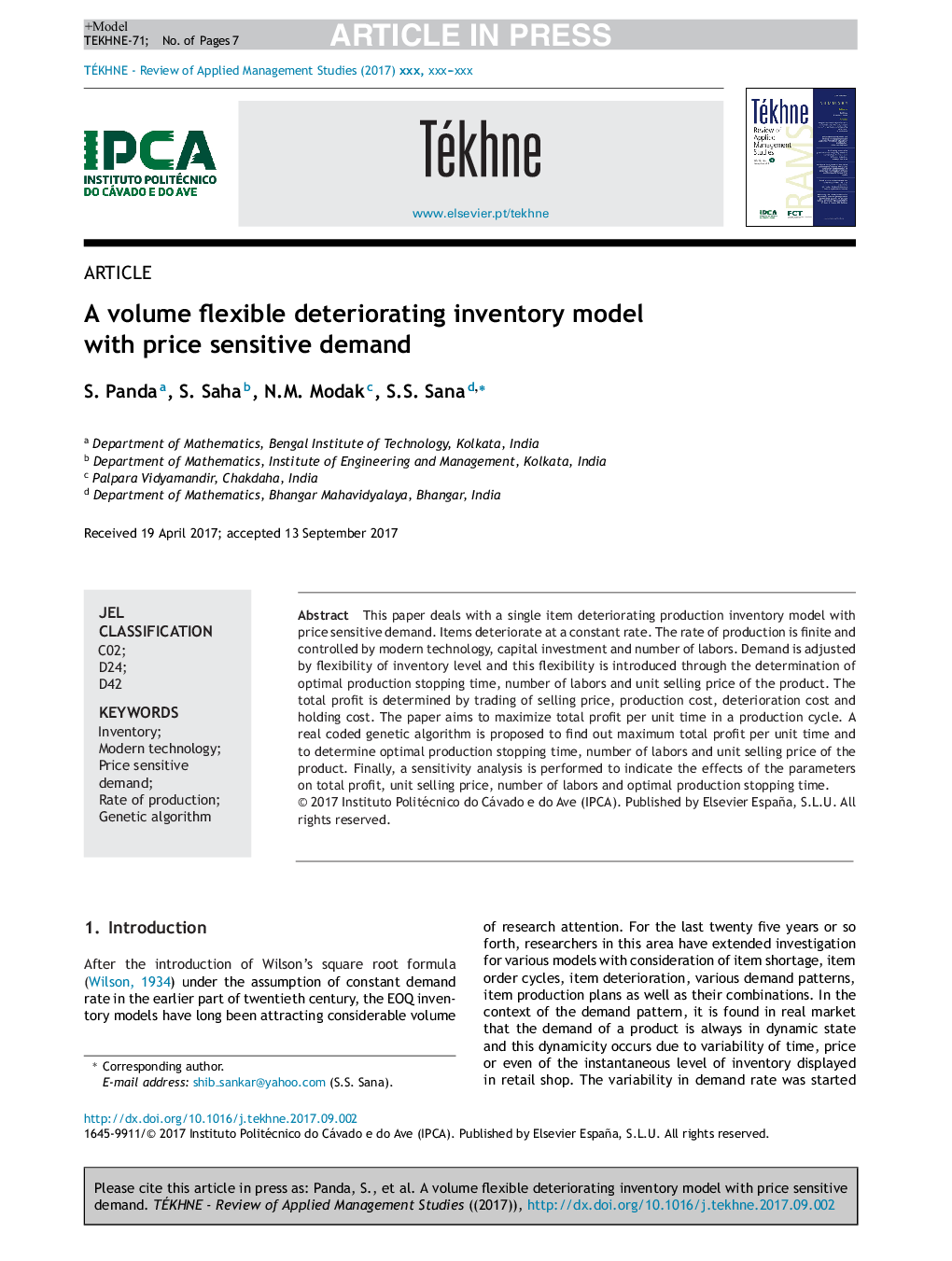ترجمه فارسی عنوان مقاله
حجم انعطاف پذیری مدل موجودی با تقاضای حساس قیمت
عنوان انگلیسی
A volume flexible deteriorating inventory model with price sensitive demand
| کد مقاله | سال انتشار | تعداد صفحات مقاله انگلیسی |
|---|---|---|
| 162072 | 2017 | 7 صفحه PDF |
منبع

Publisher : Elsevier - Science Direct (الزویر - ساینس دایرکت)
Journal : Tékhne, Volume 15, Issue 2, JulyâDecember 2017, Pages 117-123
ترجمه چکیده
این مقاله با یک موضوع واحد رو به انحراف از مدل موجودی تولید با تقاضای حساس قیمت روبرو است. موارد با نرخ ثابت خراب می شود. میزان تولید محدود و با تکنولوژی مدرن، سرمایه گذاری و تعداد کارها کنترل می شود. تقاضا با انعطاف پذیری سطح موجودی تنظیم می شود و این انعطاف پذیری از طریق تعیین زمان توقف تولید مطلوب، تعداد کار و قیمت فروش واحد محصول معرفی می شود. سود کلی با معامله با قیمت فروش، هزینه تولید، هزینه خرابکاری و هزینه نگهداری تعیین می شود. هدف مقاله حداکثر رساندن سود کل در واحد زمان در یک دوره تولید است. یک الگوریتم ژنتیک واقعی کد شده برای یافتن حداکثر سود کلی در واحد زمان پیشنهاد می شود و برای تعیین زمان توقف تولید بهینه، تعداد کار و قیمت فروش واحد محصول. در نهایت، تجزیه و تحلیل حساسیت برای نشان دادن اثرات پارامترها بر سود کلی، قیمت فروش واحد، تعداد کار و زمان توقف تولید بهینه انجام می شود.

